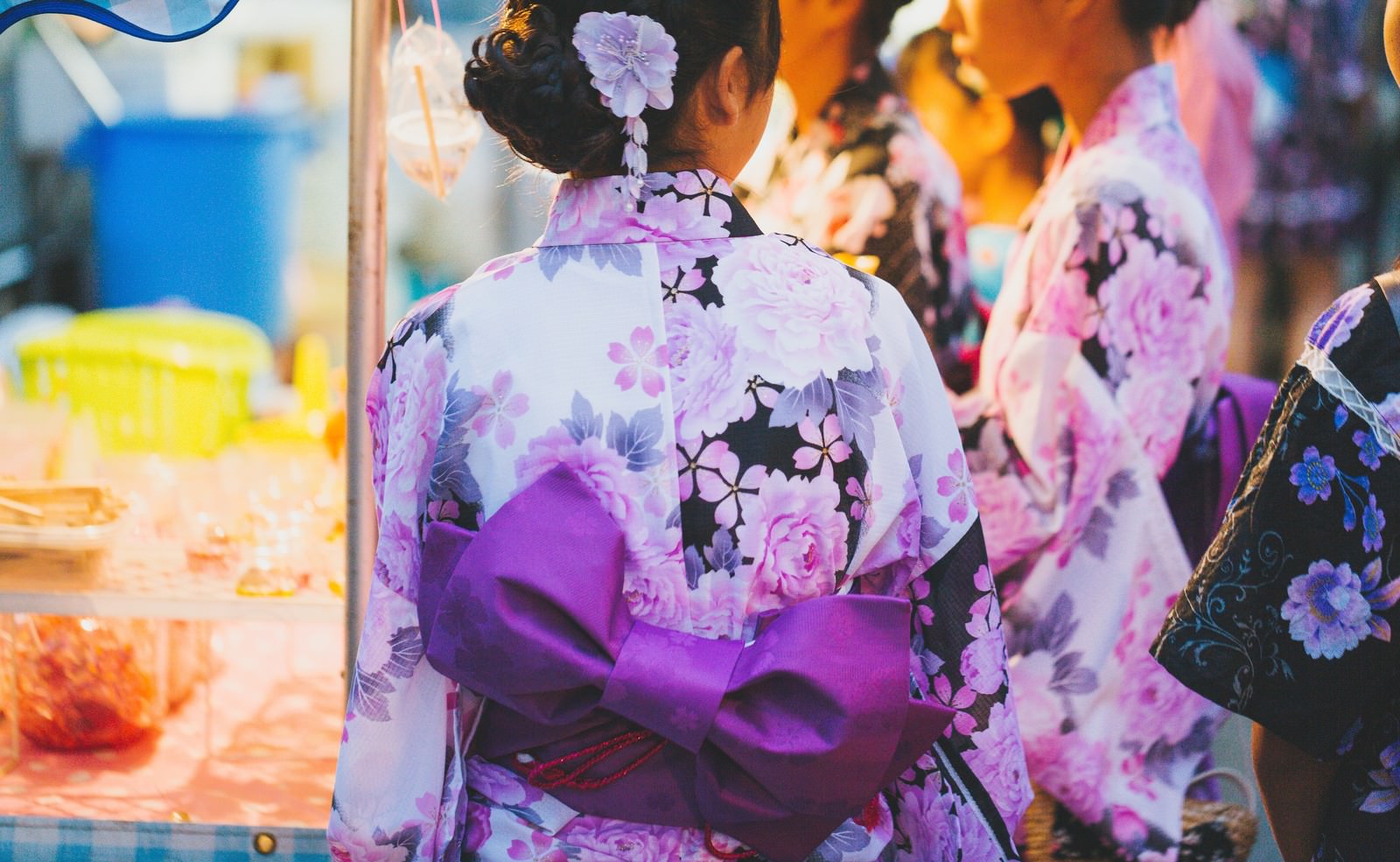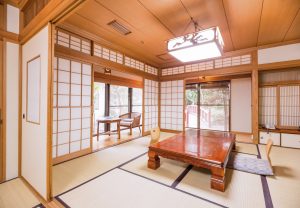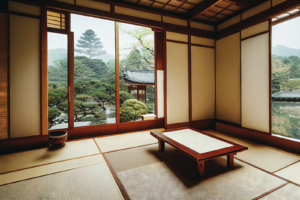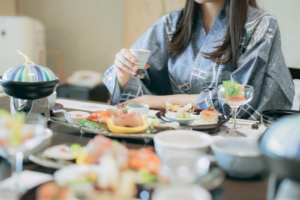Have you ever heard of the word “yukata (浴衣)”?
This is a traditional Japanese summer garment, and it’s been experiencing a resurgence in popularity among younger people, so you may often see it in Japan as part of summer fashion.
During fireworks displays, summer festivals, and Bon dances (盆踊り)—iconic summer events in Japan—you’ll often spot both men and women dressed in yukata.
Additionally, yukata are commonly provided at Japanese ryokans (旅館).
Here, I’ll talk about the charm of ryokan yukata, the benefits of wearing them, and some tips on how to wear them properly.
Yukatas at a Japanese ryokan
The yukata provided at ryokans are made from lightweight, breathable materials. Most ryokans have shared hot springs (onsen: 温泉), and after bathing, when your body temperature rises and you tend to sweat, the cotton-made yukata is ideal. You can simply slip it on and tie it with a sash (obia: 帯) to wear it.
These yukata are designed for comfort and ease of wear. They typically feature calm colors and simple patterns. In the past, some even had the ryokan or hotel’s name printed on them, but since that’s no longer fashionable, most ryokans now provide more neutral designs. You can relax in the ryokan wearing the yukata, sleep in it, dine in it, and even stroll around the ryokan or nearby outdoor hot springs.
It’s important to note that these ryokan yukata are different from the fashionable yukata you’ll see at the summer events I mentioned earlier. Fashion yukata, though more casual than traditional kimono, are known for their vibrant, sophisticated designs. They come in various patterns, from floral to abstract and traditional Japanese motifs. Women’s yukata are often coordinated with brightly colored sashes and accessories, while men’s yukata tend to be simpler in design. These fashionable yukata are typically either owned or rented.
How to wear a yukata at a ryokan
The ryokan’s yukata is usually found somewhere in the room, often in the closet. If the provided yukata doesn’t fit, you can ask the front desk for a better-fitting one.
Wearing yukata is simple.
First, it’s easy to understand that you put your arms through the sleeves, isn’t it?
Next, hold the right front panel against your body and overlap the left front panel on top of it. While keeping the left panel in place, wrap the sash firmly around your waist to secure the yukata.
Tie the sash comfortably but securely so that it stays in place when you walk or sit.
Since the sash is the only thing holding the yukata together, it may loosen as you move around. If the yukata loosens and reveals your underwear or body, it could be uncomfortable for both you and those around you, so it’s good to check your sash from time to time.
Typically, you wear yukata barefoot, but if your feet get cold, you can wear socks. Of course, it’s also fine to wear a t-shirt or underwear underneath.
In Japanese culture, it’s customary for the left front panel to be on top when wearing traditional clothing. Having the right front panel on top signifies dressing a deceased person. This is an important detail to remember.
More than ten years ago, I entered the dining hall for breakfast without realizing that my way of wearing yukata was wrong. A female staff member who was serving breakfast approached me and whispered in my ear,
“Excuse me, but your yukata is worn incorrectly. Shall we fix it behind that folding screen?”
Thanks to her, I was able to adjust my yukata behind that beautiful screen and enjoy my breakfast without feeling embarrassed.
If a foreigner makes such a mistake, most Japanese people will likely understand that the person don’t know the cultural significance. However, some may feel a bit of discomfort. So, if you’re going to wear yukata, keep this point in mind.
In cold seasons or when it’s chilly, it’s a good idea to wear a “tanzen (丹前)” or “haori (羽織)” over your yukata. These are often provided along with the yukata.

If you’re strolling around a hot spring town, trying on “geta (下駄: wooden sandals)” can be a delightful experience—the sound of the geta is quite charming and atmospheric. Ask the ryokan if they have any available for guests to borrow if you’re interested (though you might be surprised by how hard they feel!).
Also, no matter how much you like the yukata, it belongs to the ryokan, so please don’t take it home.
And remember, this yukata is different from the fashionable ones worn by Japanese people, so it’s best not to continue travelling Japan, wearing it. To the Japanese, it’s immediately clear that it’s an ryokan’s yukata!





